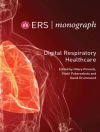<p>In the last two decades, spine instrumentation and surgery have undergone many improvements. The second edition benefits from contributions by renowned orthopaedic surgeons and neurosurgeons who helped create and refine the systems described in the book, and devoted their careers to educating next generations of spine surgeons.</p><p>Advancements in instrumentation — plates, cages, rods, screws, disc replacements, spacers, and fusion devices — have led to improved outcomes for patients. The spinal device field has grown exponentially, and surgeons are faced with an increasingly diverse choice of instrumentation options. While the first edition categorized available systems, the new edition is focused on helping clinicians avoid complications and quickly recognize and manage complications when they do occur.</p><p>Key Features</p><ul><li>A concise yet comprehensive reference that educates clinicians on the causes, recognition, and avoidance of instrumentation complications</li><li>Organized by anatomical region and condition, the visualization of relevant anatomical landmarks is discussed in context with safe use of spinal instrumentation</li><li>Now four-color, with more than 230 new and original illustrations</li><li>Easy-to-digest text helps translate classroom knowledge into clinical application</li></ul><p>This up-to-date book will help orthopaedic surgeons and neurosurgeons learn how to utilize spinal devices more efficaciously and safely. The text is also an excellent reference for radiologists, spine fellows and residents, and physician extenders who are interested in attaining knowledge and experience in spinal instrumentation.</p>
Содержание
<p><strong>Cranial</strong><br>1 Complications of Occipital Instrumentation<br>2 Vascular Complications of Posterior Cervical Procedures<br>3 Complications of C1 Lateral Mass Screw Fixation<br>4 Complications of C2 Pedicle and Pars Screw Placement<br>5 Complications of C1–C2 Transarticular Screws<br>6 Complications of C1–C2 Wiring<br>7 Complications of C2 Translaminar Screw Placement<br>8 Complications of Subaxial Lateral Mass Screw Fixation<br>9 Pedicle Screw Fixation in the Subaxial Cervical Spine: Indications, Contraindications, and Complications<br>10 Complications Related to Selected Instrumented Fusion Levels for Subaxial Fusions<br>11 Complications of Laminoplasty<br>12 Complications Related to Cervicothoracic Instrumentation<br>13 Anterior C1–C2 Fusion Instrumentation Complications<br>14 Complications of Odontoid Fracture Treatment<br>15 Complications of Static Anterior Cervical Plates<br>16 Complications of Tranlational Anterior Cervical Plates<br>17 Ectopic Ossification following Anterior Cervical Discectomy and Fusion or Disc Replacement<br>18 Failure of Anterior Cervical, Low-Profile, Stand-Alone Screw–Plate Devices<br>19 Complications of Buttress Plating Multilevel Anterior Cervical Corpectomies<br>20 Complications of Cervical Arthroplasty<br><strong>Thoracolumbar</strong><br>21 Lumbar Pedicle Screw Complications<br>22 Junctional Breakdown in Pedicle Screw Constructs<br>23 Hook Complications in the Thoracic and Lumbar Spine<br>24 Sublaminar Wiring Complications<br>25 Complications of Percutaneous Vertebral Cement Augmentation<br>26 Complications of Vertebral Body Implants Introduced through the Posterolateral Approach<br>27 Complications of Vertebral Body Replacement Cages<br>28 Complications of Anterior Thoracic Instrumentation Systems<br>29 Interspinous Spinous Process Fusion Plate Complications<br>30 Complications of Cortical Screw Fixation<br>31 Complications of Posterior Screw Fixation in Spine Surgery<br>32 Interspinous Spacer Complications<br>33 Complications of Presacral-Approach–Based Fusion Devices<br>34 Complications of Posterior and Transforaminal Lumbar Interbody Fusion<br>35 Complications of Open Transforaminal Lumbar Interbody Fusion<br>36 Complications of Instrumentation in Minimally Invasive Transforaminal Lumbar Interbody Fusion<br>37 Complications of Percutaneous Pedicle Screw Fixation<br>38 Complications of Lateral Lumbar Interbody Fusion Cages<br>39 Complications of Lateral Lumbar Fusion Plates<br>40 Complications of Lateral Lumbar Arthroplasty Devices<br>41 Complications of Lumbar Interbody Fusion with Femoral Ring Allograft<br>42 Complications of Anterior Lumbar Interbody Fusion with Polyether Ether Ketone Spacers<br>43 Complications of Stand-Alone Anterior Lumbar Interbody Fusion<br>44 Complications of Anterior Lumbar Disc Replacement<br>45 Complications of Iliac Screw Fixation<br>46 Complications of Sacral Alar Iliac Screw Technique<br>47 Complications of Sacropelvic Reconstruction for Tumor<br>48 Complications of Instrumentation in Cervical Spondyloarthropathy<br>49 Thoracolumbar Osteoporosis<br>50 Complications of Thoracolumbar Instrumentation in Patients with Spondyloarthropathies<br>51 Infection<br>52 Instrumentation Complications following Spinal Tumor Surgery<br>53 Cervical Kyphosis<br>54 Instrumentation Complications Occurring from Thoracic Hyperkyphosis<br>55 Flatback<br>56 Lumbar High-Grade Spondylolisthesis<br>57 Complications Related to Spinal Instrumentation and Surgical Approaches<br>58 Complications of Osteobiologics in Spine Surgery<br>59 Removal and Revision of Broken Thoracolumbar Screws<br>60 How to Remove/Revise Thoracolumbar Interbody Devices (TLIF Cages/ALIF Cages)</p>












